Video above shows Edward Hood, one of four Black jurors excluded from Timothy Tyrone Foster’s jury through “peremptory” challenges. The Supreme Court did not rule on the lack of Black jurors on the original jury venire, a problem that has existed in Wayne County, Michigan’s courts.
Associated Press
May 23, 2016
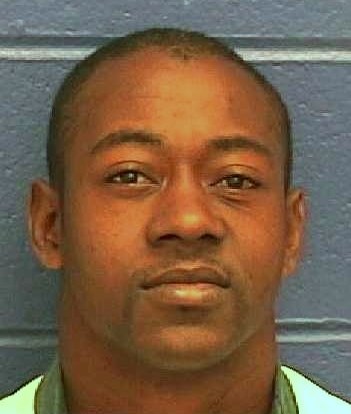
Timothy Tyrone Foster, sentenced to death in Georgia at the age of 18.
Washington — The Supreme Court ruled decisively in favor of death-row inmate Timothy Tyrone Foster in Georgia on Monday, chastising state prosecutors for improperly keeping African-Americans off the jury that convicted him of killing a white woman.
The justices ruled 7-1 in favor of death row inmate Foster in underscoring the importance of rules they laid out in 1986 to prevent racial discrimination in the selection of juries.
Chief Justice John Roberts wrote for the court that Georgia “prosecutors were motivated in substantial part by race” when they struck African-Americans from the jury pool.
But the court did nothing to limit peremptory strikes, lawyers’ ability to reject potential jurors without offering any reason. The late Thurgood Marshall once said that racial discrimination would persist in jury selection unless peremptory strikes were curtailed.
[Foster, an 18-year-old African-American, was charged in 1986 with killing Queen Madge White, an elderly white woman, in Rome, Georgia. At Foster’s capital trial the following year, the prosecutors used four of their nine peremptory strikes to remove all four black prospective jurors, resulting in an all-white jury to try this racially charged case. They claimed that the strikes were not based on race, asserting eight to twelve “race-neutral” reasons for each. The lead prosecutor later urged the jury to impose a death sentence to “deter other people out there in the projects.”]
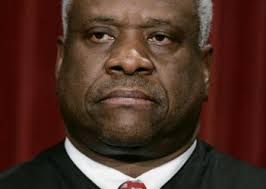
U.S. Supreme Court Justice Clarence Thomas dissented from opinion.
The outcome probably will enable Foster to win a new trial, 29 years after he was sentenced to death.
Justice Clarence Thomas dissented, saying he would have respected the decisions of state judges who sided with prosecutors and rejected Foster’s claims.
When the case was argued in November, the justices did little to hide their distaste for the tactics employed by prosecutors in north Georgia. Justice Elena Kagan said the case seemed as clear a violation “as a court is ever going to see.”
Still, Georgia courts had consistently rejected Foster’s claims of discrimination, even after his lawyers obtained the prosecution’s notes that revealed prosecutors’ focus on the black people in the jury pool. In one example, a handwritten note headed “Definite No’s” listed six people, of whom five were the remaining black prospective jurors.
The sixth person on the list was a white woman who made clear she would never impose the death penalty, according to Foster’s lawyer, Stephen Bright. And yet even that woman ranked behind the black jurors, Bright said.
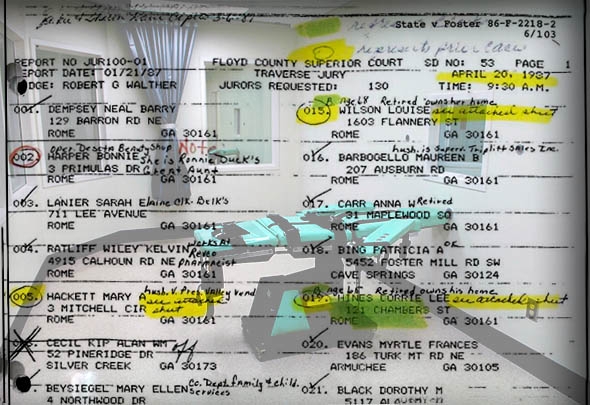
Prosecutor’s notes on jury selection document.
The court was not persuaded by the state’s argument that the notes focused on black people in the jury pool because prosecutors were preparing to defend against discrimination claims. The Supreme Court’s ruling about race discrimination in jury selection was about a year old when Foster’s case went to trial, the state said. The 1986 decision in Batson v. Kentucky set up a system by which trial judges could evaluate claims of discrimination and the explanations by prosecutors that their actions were not based on race.
“This argument falls flat,” Roberts wrote. He noted that the record shows “a concerted effort to keep black prospective jurors off the jury.”
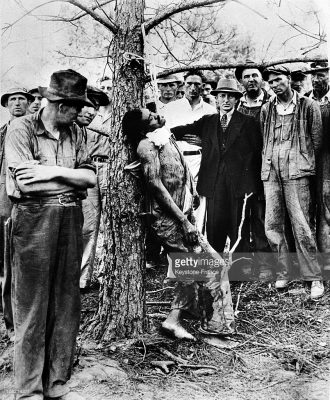
Have the times really changed? Lynching of Black man accused of rape in Royston GA around 1935.
Foster’s trial lawyers did not so much contest his guilt as try to explain it as a product of a troubled childhood, drug abuse and mental illness. They also raised their objections about the exclusion of African-Americans from the jury. On that point, the judge accepted prosecutor Stephen Lanier’s explanations that factors other than race drove his decisions. The jury convicted Foster and sentenced him to death.
The jury issue was revived 19 years later, in 2006, when the state turned over the prosecution’s notes in response to a request under Georgia’s Open Records Act.
The name of each potential black juror was highlighted on four different copies of the jury list and the word “black” was circled next to the race question on questionnaires for the black prospective jurors. Three of the prospective black jurors were identified in notes as “B#1,” ‘’B#2,” and “B#3.”
An investigator working for the prosecutors also ranked the black prospective jurors against each other in case if “it comes down to having to pick one of the black jurors.”
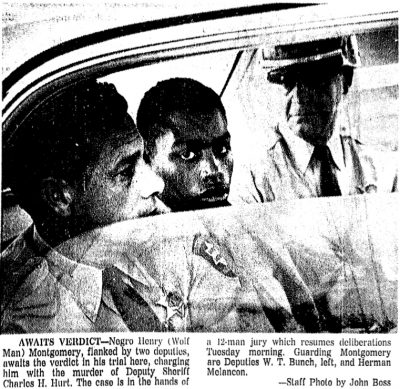
Henry Montgomery, 17, before sentence of death of in Louisiana in 1986.
VOD editor: George Montgomery was the plaintiff in the historic Montgomery v. Louisiana case
The USSC declared Jan. 25, 2016 that an earlier Supreme Court decision banning life without parole (death in prison) sentences for juveniles was retroactive.
Montgomery was originally sentenced to death in 1968, but his conviction was overturned due to the defense’s allegations of extreme racism during his trial. When will the times change?
Related:




